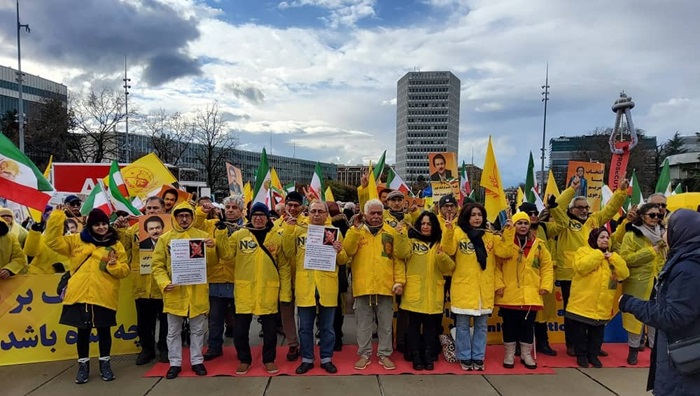
Each morning, Saied, a committed advocate for human rights, prepares for his daily trip from the outskirts of Paris to its heart, where he and his fellow activists expose the Iranian regime’s abuses.
For nearly ten years, regardless of the weather, they have set up displays depicting Iran’s human rights violations, capturing the attention of Parisians and tourists alike.
“This is the least I can do for the Iranian people,” Saied says, reflecting on his drive and the collective mission of his group. Their efforts focus primarily on central Paris, a strategic choice that maximizes their visibility and impact. The poignant images they share make it difficult for passersby to ignore the stark reality of the situation.
Massoud, another activist in the group, points out that many people are shocked by the atrocities they learn about. “Many are unaware of the regime’s heinous crimes against humanity, particularly those perpetrated in the 1980s,” he explains. This period was marked by the regime’s fierce suppression of dissent, notably against the People’s Mojahedin of Iran (PMOI/MEK), Iran’s largest opposition group at the time.
Saied shares a personal tragedy that fuels his activism: his brother, a university student, was executed in 1981 for supporting the MEK. The crackdown on the MEK was ruthless, with tens of thousands arrested, executed, or tortured. The MEK initially played a key role in the 1979 overthrow of Iran’s monarchy but quickly fell out of favor when they opposed the theocratic regime that emerged.
2- #Paris, #France—April 6, 2024: Freedom-loving Iranians and #MEK supporters held an exhibition in solidarity with the #IranRevolution.#NoImpunity4Mullahs #FreeIran2024 pic.twitter.com/7zo4HT5Oo1
— Iran Freedom (@4FreedominIran) April 6, 2024
The horrors continued into the late 1980s when the regime, under Ayatollah Khomeini, carried out mass executions of MEK supporters following a fatwa. The infamous “Death Commissions” were responsible for over 30,000 deaths, a dark chapter in Iran’s history that these activists strive to bring to light.
The story of Azadeh, who was arrested and tortured as a child along with her mother, adds a deeply personal layer to their campaign. Her haunting memories of imprisonment and the visible scars borne by her mother are powerful testimonies to the regime’s cruelty.
The commitment of Saied and his comrades extends beyond their displays in Paris. They have participated in various international protests and sit-ins, including significant ones outside the Swedish court during the trial of Hamid Noury, a prison official involved in the 1988 massacres. Noury’s recent sentencing to life imprisonment under the principle of “Universal Jurisdiction” was a significant, albeit rare, victory for justice.
@campashraf & @MeK supporters on senate hearing @h_Clinton demanding delist MeK @USAdarFarsi @IranTweet @CNNIranDesk pic.twitter.com/FsXMjNuW
— Shirin Nariman (@ShirinNariman) February 28, 2012
Despite the dangers they face, including potential retaliation by the regime’s affiliates, the activists remain dedicated. “We’ve maintained this exposition and stand for many years, braving all weather conditions,” Saied declares. Their continued efforts in Paris and globally signify not just a fight against past injustices but a call for ongoing vigilance and action against human rights abuses.

MEK Iran (follow us on Twitter and Facebook), Maryam Rajavi’s on her site, Twitter & Facebook, NCRI (Twitter & Facebook), and People’s Mojahedin Organization of Iran – MEK IRAN – YouTu
